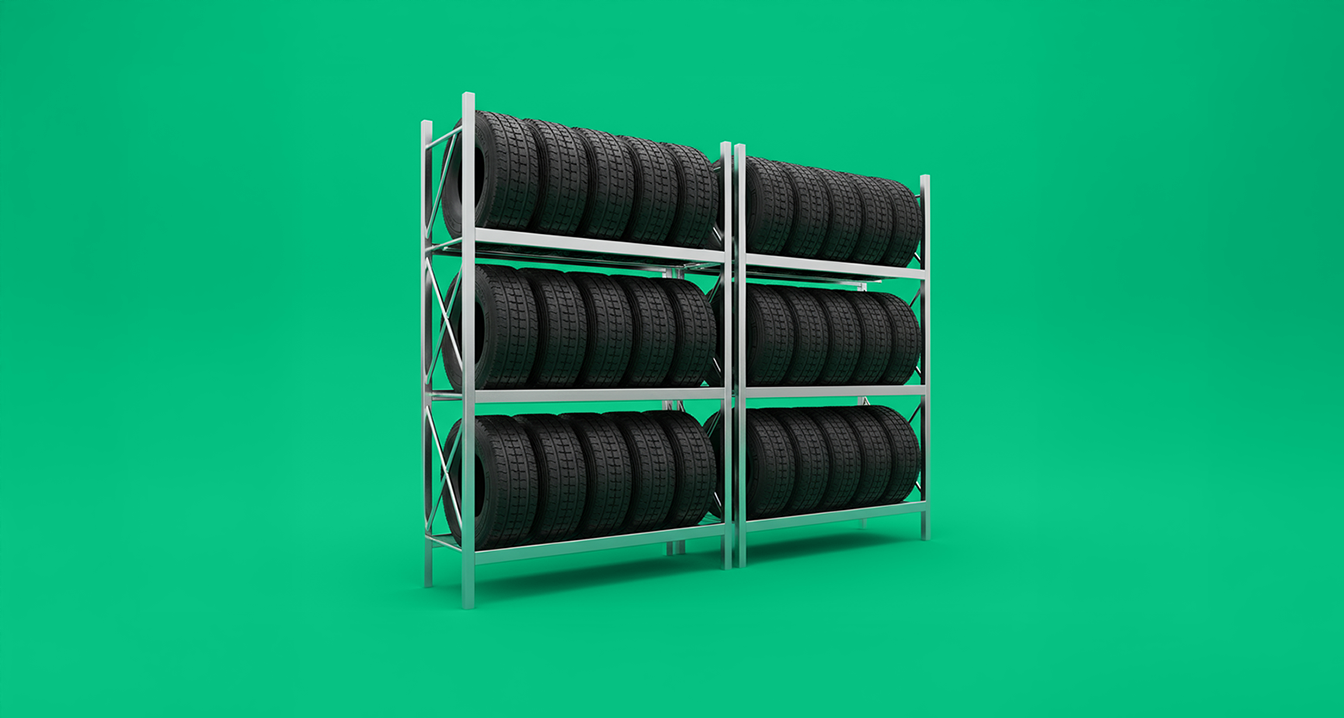Imagine that you are driving at 100 km/h. In an instant, without warning, the car in front of you suddenly braked... What options do you have? Can you stop before you crash! ?
In fact, answering these questions is not just about the brake system... but about the distance you left between you and the car in front of you.
The safety distance is not a luxury or an optional behavior. It is the dividing line between survival and accident, between wise leadership and recklessness. In this article, we will guide you to know the minimum safety distance, how to calculate it, and the most important factors affecting it. Most importantly, we will answer a very important question: What should I do in a split second in a situation like this?
What is the safety distance?
The safety distance is the space and time space you leave between you and the car in front of you to ensure that you have enough time to act and be able to stop safely in the event of an emergency.
For example, while driving normally on the highway, the car in front of you suddenly braked, or a stray animal appeared on the road, or you were surprised by an unexpected pothole...
At this moment, it is not about your skills or the quality of your brakes, but rather the distance you have given yourself. Here, a distinction must be made between “safety distance” and “stopping distance”.
The stopping distance is the distance that starts from the moment you realize the danger until the full stop. It includes: the reaction time (usually between 1 to 1.5 seconds) and the braking distance itself.
If you do not leave this distance in advance, you will not have enough time to avoid a collision. When you leave the appropriate safety distance, you actually buy a time of safety, a time to think, decide, and get away from danger.
Simply put: the safety distance means that you are not only driving with your eyes, but also with your mind and awareness.
The safety distance is not just a space between you and the car in front of you. It is the time you buy for yourself to think, avoid, and survive.
What is the minimum safety distance depending on speed?
The golden rule here is: the two-second rule.
That is, the distance between you and the car in front of you should be equal to the distance you travel in at least two seconds.
How do you calculate the minimum safety distance depending on speed?

Here's a simple method:
- Choose something that is fixed on the side of the road (a tree or a power pole, for example).
- When the vehicle in front of you passes the side of that chosen object, start counting immediately but quietly.
- You certainly thought that counting was traditional from number (1), but in fact you have to count in another format.
- This formula is to start counting from the number 1001 (1001... 1002... 1003...).
- Now, assuming you have reached the same point you specified (the tree or the power pole) before reaching 1002, it means that you are very close and you need to increase the distance immediately.
- In a more general and easier sense, “meaning that the distance between you and the vehicle in front of you is shorter than two seconds”, because the word “1001 then 1002” takes two seconds, so you are in danger.
Of course to confirm this information, try counting by yourself now! ? You will be surprised by its accuracy. This rule is known as the “two-second rule”. It is an effective tool that helps you maintain a safety distance without the need for complicated measurements.
The strangest thing is that the distance according to this rule is also constant, i.e.:
- If you are at a speed of 60 km/h, then according to the rule of two golden seconds, the distance between you should be about 33 meters.
- If you are at a speed of 80 km/h, the distance between you should be about 44 meters.
- If you are at 100 km/h, the distance between you should be at least 55 meters.
You should know that the minimum golden two-second rule applies only in ideal conditions. On wet roads or when heavy loads, the distance should be doubled (instead of 44 meters, it should be approximately 90 meters).
Factors that affect the safety distance:
You may think that the safety distance depends only on your speed, but in fact it is affected by several factors combined, each of which may increase or decrease the distance you need to stop safely. These factors include the road, tires, load, and even your state of mind while driving. Here are the most important of these factors:
- Road condition:
A wet or sandy road increases stopping distance due to reduced grip.
- Tire quality:
Good tires reduce braking distance.
- Vehicle weight:
Heavy vehicles need a longer stopping distance.
- Brake condition:
Invalid brakes = disaster.
- Reaction speed:
The more alert the driver is, the shorter the distance required to stop.
The safety distance depends not only on your speed, but also on your awareness of everything around you: road, tires, cargo, and even your state of mind.
What happens if I ignore the safety distance?
According to statistics from the U.S. National Traffic Safety Administration (NHTSA) in 2022, 32% of rear-end collisions were directly caused by not leaving a sufficient distance.
In a study conducted by the British Royal Automobile Association (RAC), it was shown that 4 out of 5 drivers do not leave enough distance while driving, especially on highways.
Surely you know the result? Sudden collisions, breakdowns, injuries, and endless insurance issues.
Common mistakes among drivers:
If we want to write a book in which we talk about all drivers' mistakes while driving, we need a full publishing house for writing and printing. Such a book may have more than 10,000 pages. In the Darbak Knowledge Library, we try to talk about all the common mistakes related to the main topic. We may integrate the idea and warn drivers against negative practices while driving. Some of the errors related to safety distance and the protection system are the following:
- Drive near the front car to save time.
- Modern brakes are thought to replace the distance.
- Indifference in traffic and reducing distance in the belief that there is no danger.
- Focus on the phone or other distractions while driving which reduces response time.
Practical tips for keeping a proper safety distance:
- Stick to the rule of 2 seconds in normal circumstances, 3 seconds in rain, and 4 seconds in snow or fog.
- Keep an eye on the road, and don't just focus on the car in front of you.
- In traffic, stay alert even at slow speeds.
- Don't let aggressive drivers push you to reduce the distance.
The golden seconds of each case:
1001-1002 in normal circumstances.
1001-1002-1003 in the rain.
1001-1002-1003-1004 in snow and fog
The role of tires in stopping distance:
Here is the horse link. You are hosted by Darbek. As a company whose products have received the Saudi Quality Mark, we can proudly tell you that Darbek tire helps you reduce the risk of accidents in the safety distance by 18%. According to a study published by Safety & Mobility magazine in 2021, new and high-quality tires reduce the risk of stopping distance by 18% compared to worn or poor tires.
The Darbek tires — which have the Saudi Quality Mark — are specifically designed to give you maximum grip at critical moments, reducing stopping distance and increasing your chances of avoiding a collision.
Remember that a bad tire does not help you even if you hit the brakes hard. All it does is slip. A good tire holds on to the road and responds to braking quickly.
According to a study by Safety & Mobility magazine, new tires reduce stopping distance by 18%, and Darbek's carefully designed tires give you that difference when seconds are critical.
In conclusion...
The distance between you and the car in front of you may not seem important in the first moment, but it may determine your fate at the crucial moment. We started the article with a very important question: What should I do in a split second in a situation like this?
The answer to this question depends on the safety of your vehicle's parts (tires and brake system) and, most importantly, your speed of response to an emergency event. However, in all cases, no matter how vigilant you are, if you are not within the safe distance, you are in danger. The smarter you are in leaving the distance, the faster you make a decision and stay away from danger.
Don't test the limits of your brakes... Test your awareness limits and invest in real safety equipment, especially your tires.
And always remember... That your tires... is the first smart decision of every journey.
Train you... keep a distance between you and danger.







